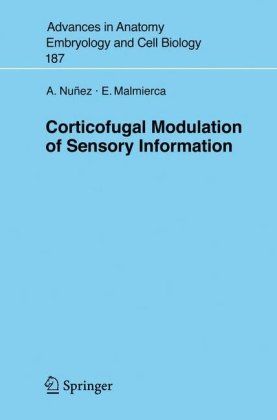Sensory signals reach the cerebral cortex after having made synapses in different relay stations along the sensory pathway. The flow of sensory information in subcortical relay stations is controlled by the action of precise topographic connections from the neocortex. Several lines of research indicate that the massive corticifugal system improves ongoing subcortical sensory processing and reorganizes the receptive fields in visual, auditory and somatosensory systems. In all these sensory systems cortical neurons mediate both the highly focused positive feedback to subcortical neurons with overlapping receptive fields and a widespread inhibition to “non-matching neurons”. This cortical feedback, which has been called “egocentric selection”, can play a pivotal role in gating the sensory information that reaches the thalamus and cortex. Thus, corticofugal projections may contribute to selective attention since they enhance neuronal responses for attentionally relevant stimuli and by suppressing sensory responses of distractive stimuli. Also, corticofugal projections enhance oscillatory activity in order to synchronize neurons located in the same or in different relay stations in order to improve sensory processing. In conclusion, corticofugal pathways precisely control sensory transmission throughout the central nervous system.
Biology
{pdf} Corticofugal Modulation of Sensory Information (Advances in Anatomy, Embryology and Cell Biology) A. Nunez, E. Malmierca
$19.99






Reviews
There are no reviews yet.